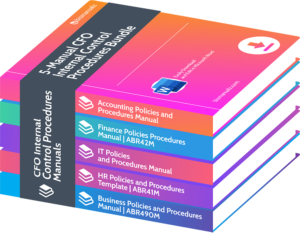What are Common CFO tax optimization strategies?

Are you tired of navigating complex tax laws and constantly worrying about minimizing your company’s tax burden? As a CFO, it’s crucial to understand various tax optimization strategies to ensure your organization’s financial health and compliance. In this article, we will explore key tactics that can help you navigate the tax landscape and maximize your company’s profits. What are Common CFO tax optimization strategies?
Why is Tax Optimization Important for CFOs?
Tax optimization is crucial for CFOs as it directly impacts a company’s bottom line. By strategically managing tax liabilities, CFOs can maximize profits and enhance shareholder value.
Effective tax optimization strategies involve analyzing tax regulations, identifying deductions and credits, and utilizing tax-efficient investment vehicles. This allows CFOs to minimize tax burdens, allocate resources effectively, and maintain compliance with tax laws.
Suggestions for CFOs include:
- Staying updated on tax laws
- Working closely with tax advisors
- Implementing tax planning strategies
- Conducting regular tax reviews
Ultimately, tax optimization is important for CFOs as it empowers them to make informed financial decisions and drive long-term business growth by maximizing profits and enhancing shareholder value.
What are the Risks of Not Optimizing Taxes?
Not optimizing taxes can pose several risks for CFOs. Firstly, they may miss out on potential cost savings and tax deductions, leading to higher tax liabilities and decreased profitability. Secondly, non-compliance with tax laws and regulations can result in penalties, fines, and damage to the company’s reputation.
Thirdly, without proper tax planning, CFOs may face cash flow issues and struggle to meet financial obligations. Finally, neglecting tax optimization can put the company at a competitive disadvantage compared to competitors who effectively manage their tax strategies.
To mitigate these risks, CFOs should prioritize tax optimization through strategic planning, seeking professional advice, and staying updated on tax laws.
What are the Different Types of Tax Optimization Strategies?
As a Chief Financial Officer, understanding tax optimization strategies is crucial for maximizing the financial success of a company. There are various types of tax optimization strategies that can be utilized, each with their own unique benefits.
In this section, we will discuss the different types of tax optimization strategies, including deductions and credits, tax planning and forecasting, international tax planning, transfer pricing, and tax-advantaged investments. By the end, you will have a comprehensive understanding of the various ways to optimize taxes for your company.
1. Deductions and Credits
Deductions and credits play a crucial role in tax optimization. CFOs can maximize savings and reduce tax liability by following these steps:
- Identify eligible deductions and credits based on current tax laws.
- Keep detailed records of expenses and income to support claims for deductions.
- Utilize tax software or seek guidance from tax professionals to ensure accurate calculations.
- Take advantage of tax credits for activities such as research and development or investments in renewable energy.
- Explore tax incentives for hiring veterans or promoting employee wellness programs.
These strategies can assist CFOs in optimizing their company’s tax position, increasing savings, and improving overall financial performance.
2. Tax Planning and Forecasting
Tax planning and forecasting are essential for CFOs to maximize financial outcomes and optimize tax strategies. Here are the steps to effectively implement tax planning and forecasting:
- Review past tax returns and financial statements to identify patterns and trends.
- Collaborate with tax professionals to assess current tax laws and regulations.
- Forecast future financial activities and earnings to estimate tax obligations.
- Identify potential tax-saving opportunities, such as deductions, credits, and exemptions.
- Develop a comprehensive tax plan that aligns with the company’s financial goals.
- Regularly monitor and update the tax plan as circumstances change.
- Evaluate the impact of tax planning on cash flow and financial projections.
By incorporating tax planning and forecasting, CFOs can optimize tax strategies, minimize tax liabilities, and enhance overall financial performance.
3. International Tax Planning
International tax planning is a crucial aspect of tax optimization for CFOs. To effectively navigate the complexities of international tax regulations, CFOs should consider the following steps:
- Understand the tax laws and regulations of different countries.
- Identify tax planning opportunities to minimize tax liabilities across borders.
- Consider transfer pricing strategies to ensure appropriate allocation of profits among entities in different jurisdictions.
- Utilize tax treaties and agreements to avoid double taxation and take advantage of preferential tax rates.
- Implement tax-efficient structures, such as holding companies or offshore entities, to optimize tax planning.
- Monitor changes in tax laws and regulations to stay compliant and adjust tax planning strategies accordingly.
By effectively implementing international tax planning strategies, CFOs can minimize tax liabilities, enhance profitability, and maintain compliance with tax laws in various jurisdictions.
4. Transfer Pricing
Transfer pricing is an essential tax optimization strategy for CFOs, particularly for multinational companies. It involves determining prices for goods, services, or intellectual property transferred between related entities in different jurisdictions. To successfully implement transfer pricing, CFOs should follow these steps:
- Conduct a detailed analysis of the company’s value chain and identify which intercompany transactions are subject to transfer pricing regulations.
- Perform a benchmarking study to compare the company’s transfer prices with those of similar companies in the industry.
- Create documentation of the transfer pricing policies and methodologies used to set prices, ensuring compliance with local tax regulations.
- Maintain precise and up-to-date documentation to support the arm’s length nature of transfer prices.
- Monitor and manage transfer pricing risks by staying informed on changes in tax laws and regulations.
In 2019, Apple Inc. faced scrutiny over its transfer pricing practices, with allegations of shifting profits to low-tax jurisdictions. The European Commission ordered Apple to pay €13 billion in back taxes to Ireland, stating that the company had received illegal state aid. This case highlights the critical nature of proper transfer pricing compliance for CFOs and the potential financial and reputational risks associated with non-compliance.
5. Tax-Advantaged Investments
To take advantage of tax-advantaged investments, CFOs can follow these steps:
- Identify potential options for tax-advantaged investments, such as tax-exempt municipal bonds and tax-advantaged retirement accounts like IRAs.
- Evaluate the potential tax benefits of each investment option based on factors like tax-free growth, tax deductions, or tax credits.
- Consider the risk and return profile of the investment to ensure it aligns with the organization’s financial goals.
- Consult with tax professionals to understand the specific tax implications and requirements of each investment.
- Create a diversified portfolio of tax-advantaged investments to maximize tax savings while managing risk.
As an example, during the Great Depression, the US government introduced tax-advantaged investments in the form of tax-exempt municipal bonds to stimulate economic growth. This allowed investors to earn tax-free interest income, encouraging investment in infrastructure projects and supporting local communities.
How to Implement Tax Optimization Strategies?
As a Chief Financial Officer, it is crucial to have a thorough understanding of tax optimization strategies in order to efficiently manage and maximize a company’s financial resources. In this section, we will discuss the practical steps for implementing tax optimization strategies.
From partnering with tax professionals to utilizing technology and staying informed on tax laws and regulations, we will explore the key elements that contribute to successful implementation. These strategies can help CFOs make informed decisions and mitigate risks in their company’s tax planning.
1. Partnering with Tax Professionals
Partnering with tax professionals is essential for CFOs to successfully implement tax optimization strategies. To effectively partner with tax professionals, follow these steps:
- Identify your specific tax needs and priorities.
- Research and create a list of potential tax professionals who specialize in your industry.
- Review their qualifications, experience, and track record.
- Conduct interviews to assess their knowledge and understanding of your business.
- Request and review references from their previous clients.
- Negotiate the terms of engagement, including fees and scope of services.
- Establish clear communication channels and expectations.
- Collaborate with tax professionals to develop a comprehensive tax optimization plan.
- Regularly communicate and provide necessary information and documentation.
- Monitor and evaluate the performance and results of the tax professionals.
2. Utilizing Technology and Software
Utilizing technology and software is crucial for efficient tax optimization. Here are some steps to successfully implement this strategy:
- Choose a reliable tax software that can streamline and simplify the tax optimization process.
- Automate data collection and analysis to ensure accuracy and efficiency.
- Utilize cloud-based solutions to centralize and secure all tax-related information.
- Integrate tax software with other financial systems to facilitate seamless data sharing.
- Stay updated with the latest tax software updates and upgrades to take advantage of new features and functionalities.
True story: A multinational corporation implemented tax software to automate tax calculations and reporting. This not only reduced the time spent on manual processes but also minimized errors, resulting in significant cost savings and improved compliance. The CFO was able to make informed decisions and optimize tax strategies effectively, leading to increased profitability and a competitive edge in the industry.
3. Staying Up-to-Date on Tax Laws and Regulations
Staying current with tax laws and regulations is essential for CFOs in order to ensure compliance and optimize tax strategies. Here are some recommended steps to follow:
- Regularly monitor tax law changes at the federal, state, and local levels.
- Subscribe to tax publications, newsletters, and blogs to stay informed about any updates.
- Participate in industry conferences, seminars, and webinars that focus on tax legislation.
- Join professional associations or networks that provide resources and updates on tax laws.
- Engage with tax advisors or consultants who specialize in tax law and can offer guidance.
- Utilize tax software or tools that provide real-time updates on changes in tax laws.
- Establish internal processes to review and analyze tax law changes and their potential impact.
What are the Benefits of Tax Optimization for CFOs?
As a CFO, understanding tax optimization strategies is crucial for effectively managing a company’s financial health. In this section, we will discuss the various benefits that tax optimization can bring to a CFO and their organization.
From increased cash flow to improved financial planning and forecasting, tax optimization can positively impact a company in many ways. Additionally, we will also explore how tax optimization can lower the risk of non-compliance and provide a competitive advantage in the market. Let’s dive into the advantages of tax optimization for CFOs.
1. Increased Cash Flow
One of the main benefits of tax optimization strategies for CFOs is the potential for increased cash flow. By following these steps, CFOs can maximize their cash flow and improve their financial performance:
- Analyze the company’s current tax positions and identify any opportunities for deductions and credits.
- Create a tax planning and forecasting strategy to optimize timing and minimize tax liabilities.
- Consider international tax planning to take advantage of lower tax rates and minimize the impact of foreign taxes.
- Implement transfer pricing strategies to ensure fair and accurate pricing between related entities.
- Explore tax-advantaged investments, such as tax-exempt bonds or retirement plans.
Pro-tip: It is important to regularly review and adjust tax optimization strategies in order to adapt to any changes in tax laws and regulations, ensuring continued improvement in cash flow.
2. Improved Financial Planning and Forecasting
Effective financial planning and forecasting is crucial for CFOs in effectively managing their organization’s finances and making informed decisions. Follow these steps to achieve this:
- Establish clear financial goals and objectives.
- Collect and analyze accurate financial data.
- Utilize financial modeling techniques to project future trends and outcomes.
- Identify potential risks and uncertainties that may impact financial performance.
- Develop strategies to mitigate risks and optimize financial outcomes.
- Regularly review and update financial plans based on actual performance.
Fact: According to a survey, organizations that prioritize improved financial planning and forecasting experience a 20% increase in revenue growth compared to those that do not prioritize it.
3. Reduced Risk of Non-Compliance
Reducing the risk of non-compliance is crucial for CFOs implementing tax optimization strategies. Here are steps to ensure compliance:
- Stay updated on tax laws: Regularly monitor changes in tax regulations to ensure adherence.
- Compliance training: Provide training to finance teams to ensure understanding of tax laws and reporting requirements.
- Record keeping: Maintain accurate and organized records to support tax filings and audits, resulting in a reduced risk of non-compliance.
- Internal controls: Implement strong internal controls to prevent errors, fraud, and non-compliance, ultimately reducing the risk of non-compliance.
- Audit readiness: Be prepared for tax audits by keeping documentation readily available, leading to a reduced risk of non-compliance.
These steps help CFOs maintain a strong financial position by reducing the risk of non-compliance.
4. Competitive Advantage
Implementing tax optimization strategies can provide CFOs with a competitive advantage. By effectively managing taxes, companies can allocate resources more efficiently, reduce costs, and enhance profitability.
Utilizing tax-advantaged investments, international tax planning, and transfer pricing are all effective tax optimization strategies that can help CFOs navigate complex tax regulations and maximize tax benefits. This can result in a lower effective tax rate for the company, freeing up cash flow for other strategic initiatives and giving them a competitive edge.
Additionally, staying proactive in tax planning and staying informed about tax laws can help CFOs avoid non-compliance and the associated penalties and reputational damage. Overall, tax optimization contributes to improved financial planning, better decision-making, and a stronger position in the market.
CFO Tax Optimization Strategies
Since tax optimization directly affects a company’s bottom line, it is essential for CFOs. CFOs can increase shareholder value and optimize profits by carefully managing tax liabilities. Analyzing tax laws, finding credits and deductions, and using tax-efficient investment vehicles are all important components of effective tax optimization techniques. This enables CFOs to keep tax laws compliant, minimize tax costs, and spend resources wisely.
Frequently Asked Questions

What is tax optimization and why is it important for CFOs?
Tax optimization is the process of strategically managing a company’s tax obligations in order to minimize tax liability and maximize potential savings. It is important for CFOs because taxes can significantly impact a company’s financial performance and bottom line. By utilizing tax optimization strategies, CFOs can help their company save money, increase profitability, and stay compliant with tax laws.
What are some common tax optimization strategies that CFOs should be aware of?
Some common tax optimization strategies that CFOs should know include tax deductions and credits, tax planning, international tax planning, and tax-advantaged investments. Other strategies may also include utilizing tax-friendly business structures and implementing tax-efficient employee compensation plans.
How can a CFO determine the most effective tax optimization strategies for their company?
CFOs should work closely with their tax advisors and legal team to assess their company’s unique financial situation and goals. By analyzing the company’s tax history, current financial status, and future projections, they can determine which tax optimization strategies will be most beneficial for their company.
What are the potential risks or challenges associated with tax optimization strategies?
One potential risk of tax optimization strategies is the possibility of being audited by tax authorities. If a company is found to have engaged in aggressive or unethical tax practices, it could result in fines, penalties, and damage to the company’s reputation. Additionally, tax laws and regulations are constantly changing, so CFOs must stay vigilant and ensure that their tax optimization strategies are in compliance with the latest laws.
How can a CFO ensure that their company is ethically and legally optimizing taxes?
A CFO can ensure ethical and legal tax optimization by working with reputable tax advisors and legal professionals. They should also stay up-to-date on tax laws and regulations, and regularly review and update their company’s tax optimization strategies to ensure compliance.
How can tax optimization strategies benefit a company’s overall financial health?
Tax optimization strategies can benefit a company’s financial health in several ways. By reducing tax liability, a company can increase its profitability and have more resources to invest in growth and expansion. It can also help improve cash flow and provide a competitive advantage in the marketplace. Furthermore, tax optimization can help a company stay financially stable and resilient during economic downturns.
















Leave a Reply